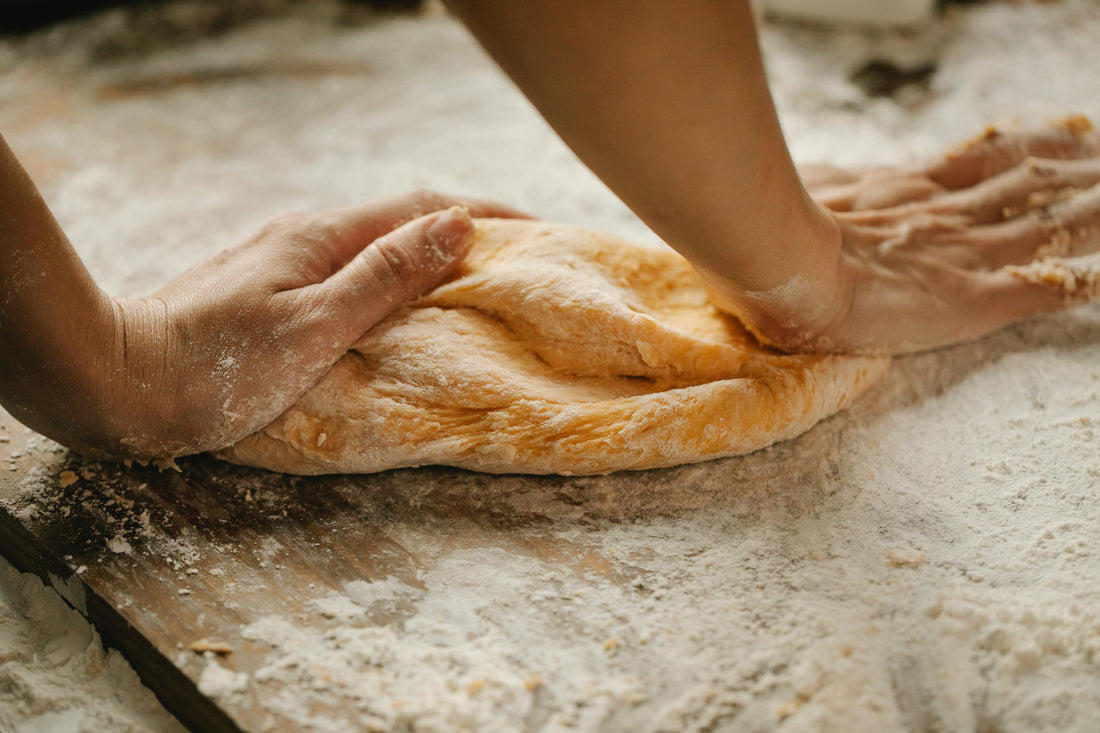
The Secret Life of Gluten: How Rolling Transforms Your Dough
Share
We all know that gluten is essential for giving bread its structure and chewiness. But did you know that the simple act of rolling can dramatically affect its behavior? Let's delve into the fascinating world of gluten and discover how rolling transforms your dough.
Gluten Development and Rolling:
Gluten is formed from two proteins found in wheat flour: glutenin and gliadin. When hydrated and manipulated, these proteins form long, stretchy strands, creating a network that traps air bubbles and gives dough its elasticity. Rolling plays a crucial role in this process by stretching and aligning these gluten strands, further developing the gluten network.
Over-Rolling: The Enemy of Tenderness:
While rolling is essential for developing gluten, over-rolling can have the opposite effect, making your dough tough and chewy. Imagine stretching a rubber band too far – it loses its elasticity and becomes stiff. The same thing happens to gluten when over-worked.
Examples:
- Pizza Dough: Requires moderate rolling to develop enough gluten for a chewy crust. Over-rolling will result in a tough, cracker-like crust.
- Pie Dough: Requires minimal rolling to prevent gluten development, resulting in a tender, flaky crust.
- Pastry Dough: Similar to pie dough, over-rolling will create a tough, rather than flaky, pastry.
Why the Rolling Pin Matters:
Perfect gluten development relies on precision and control. The Rolling Wonder rolling pin allows you to roll dough with very few strokes, preventing overworking while still achieving perfect results. At the same time, if you want to develop more gluten, it’s incredibly easy, thanks to the ergonomic design and silky glide that make rolling a breeze. Whether you’re aiming for a chewy pizza crust or a delicate, flaky pie, Rolling Wonder helps you achieve the ideal balance with minimal effort.
Summary:
Gluten, formed from glutenin and gliadin proteins in wheat flour, is crucial for giving bread its structure and chewiness. Rolling plays a significant role in developing the gluten network by stretching and aligning the gluten strands. However, over-rolling can lead to a tough and chewy texture, as demonstrated in the examples of pizza dough, pie dough, and pastry dough. To achieve the desired texture, it is essential to understand the role of rolling in gluten development and to adjust the rolling technique accordingly. By mastering the art of rolling, bakers can create a wide range of textures, from chewy pizza crusts to tender, flaky pastries.
References:
Delcour, J. A., Joye, I. J., Pareyt, B., Wilderjans, E., Brijs, K., & Lagrain, B. (2012). Wheat gluten functionality as a quality determinant in cereal-based food products. Annual Review of Food Science and Technology.
Jekle, M., & Becker, T. (2015). Wheat dough microstructure: The relation between visual structure and mechanical behavior. Critical Reviews in Food Science and Nutrition.
